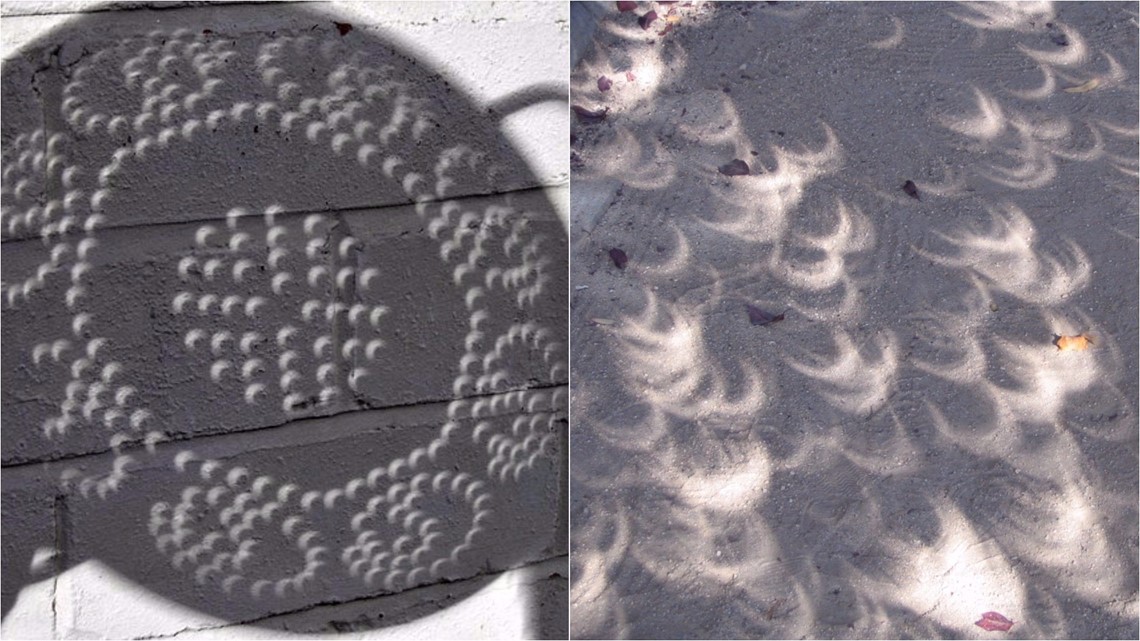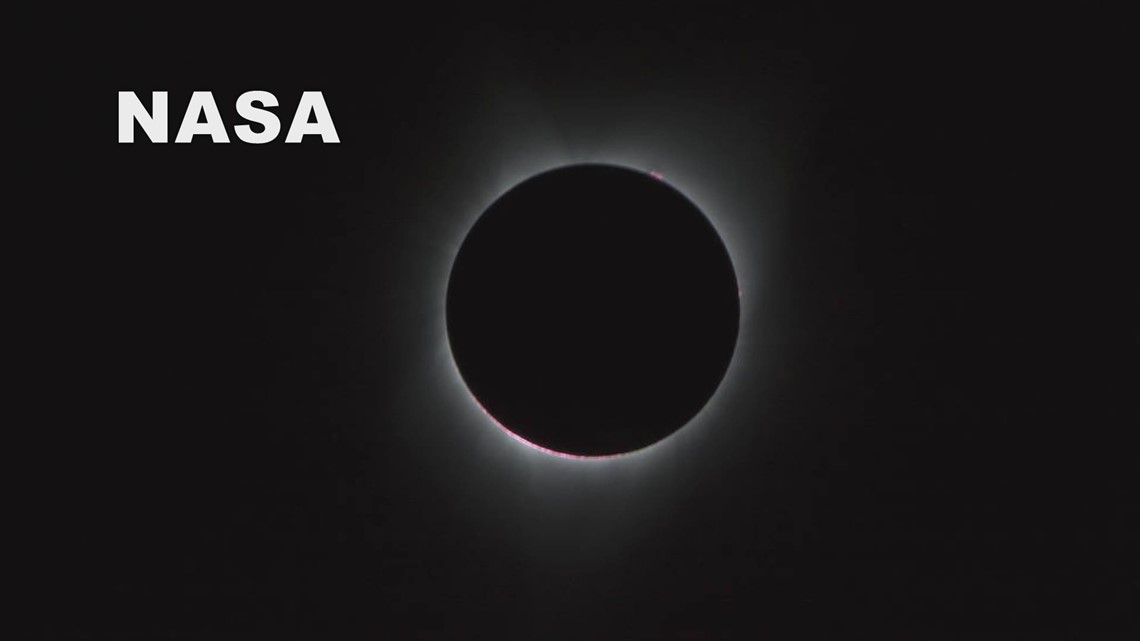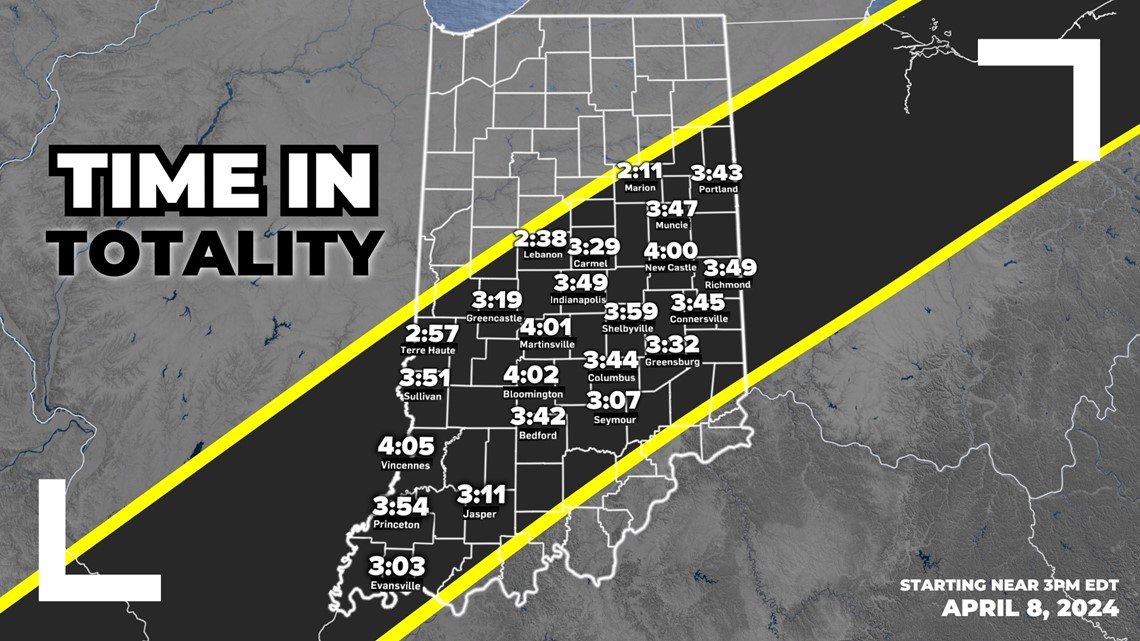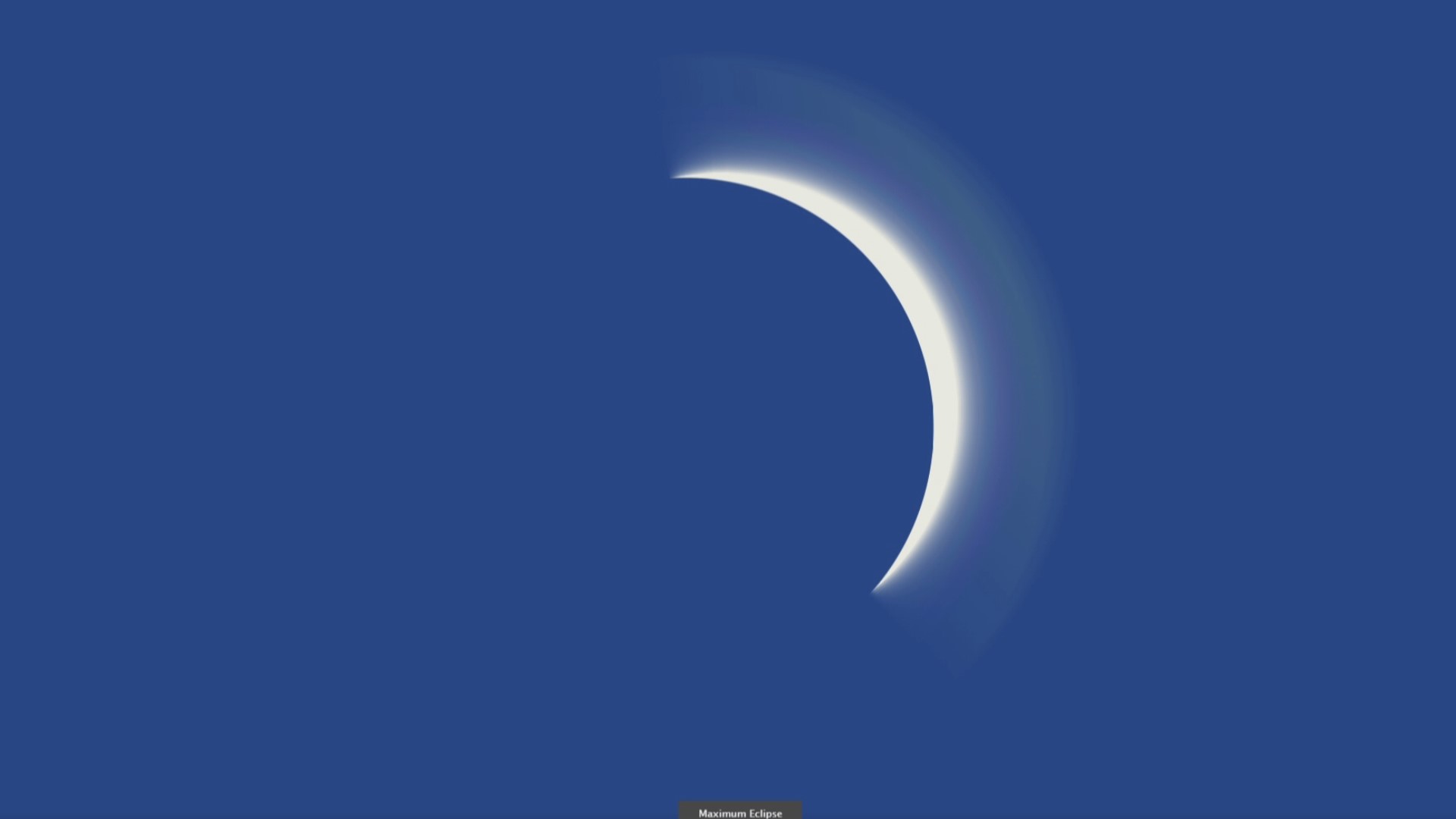MICHIGAN, USA — The countdown is on for the 2024 solar eclipse.
The moon will pass between the Earth and the sun, obscuring the sun from view for minutes during the middle of the day on April 8. In places with 100% totality, you'll only be able to see the stunning view of the sun's corona burning bright around the darkened sky.
An already unique event, this year's eclipse is especially rare. It'll stick around for double the amount of time as the last solar eclipse in 2017.
But what can you expect to see in West Michigan, and is it worth the drive for just 7% more totality? With some help from the 13 ON YOUR SIDE Weather team, we answer.
What will West Michigan's eclipse look like?
Here in West Michigan, we can expect to see a 93% totality. This means the moon will cover 93% of the sun when passing over the area, leaving only a crescent shape of sunlight visible.
The 13 ON YOUR SIDE Weather team says while the sky won't go completely dark, it will still get darker, similar to if it were evening time. You won't be able to see stars in the sky at this level of darkness, and you'll need to wear protective glasses anytime you're viewing the event.
One unique aspect of the 93% totality area is that shadows will be in the shape of crescents. When you look at the sunshine hitting the ground through gaps in the leaves, you'll see little crescent moon shapes rather than normal shadows.


The entire event is expected to last two hours and 29 minutes, peaking around 3:11 pm EDT in Grand Rapids.
Here's a timeline of the eclipse:
- 1:55 pm - First Contact - the partial eclipse begins when the edge of the Moon touches the edge of the sun.
- 2:17 pm - 20% Coverage - about one-fifth of the Sun's disk is covered by the Moon.
- 2:25 pm - Temperature Changes - the amount of solar energy decreases so temperatures may begin to cool slightly.
- 2:40 pm - Sky Darkens - as the eclipse progresses, the sky begins to darken.
- 2:48 pm - Weather Changes - conditions continue to change.
- 2:55 pm - Colors Fade - surroundings start to darken; colors turn grayish.
- 3:04 pm - Nature Reacts - animal and plant behavior affected.
- 3:11 pm - Maximum Eclipse
- 3:17 pm - Nature Returns - animals and plants are returning to normal.
- 2:34 pm - Sky Brightens - the sky and surroundings returning to normal.
- 3:30 pm - 20% Coverage - about one-fifth of the Sun's disk is covered by the Moon.
- 3:24 pm - Last Contact - the partial eclipse ends when the edge of the Moon leaves the edge of the sun.
To best visualize the event, watch the eclipse simulator over Grand Rapids here.
Is it that different from 100% totality?
The answer, according to our weather team, is yes. Every percentage point away from 100% totality makes a huge difference in eclipse viewing.
In Marion, Indiana, for example, one of the closest towns to West Michigan with 100% totality, the sky will be almost pitch black at its peak.


While standing in the shadow of the moon, you'll be able to see the astonishing view of stars in the sky during the afternoon.


In areas with complete totality, you'll still need to wear eclipse glasses leading up to and after peak viewing. But when the moon is directly in front of the sun, you'll be able to experience the event without glasses, as the moon is blocking nearly all of the sunlight that could damage your eyes.
Read more on eclipse eye safety and how to fashion your own safety glasses here.
Summary
The next full solar eclipse won't be visible in the contingent United States until 2044. Even then, it won't have a broad reach. It will sweep through Canada and end near Montana and the Dakotas.
The 2024 eclipse could be a once-in-a-lifetime chance to see the breathtaking rare cosmic event so close to home.
Wherever you view it, make sure you're doing it safely and taking advantage of the only day a year when darkening your day could actually brighten it!
►Make it easy to keep up to date with more stories like this. Download the 13 ON YOUR SIDE app now.
Have a news tip? Email news@13onyourside.com, visit our Facebook page or Twitter. Subscribe to our YouTube channel.
Watch 13 ON YOUR SIDE for free on Roku, Amazon Fire TV Stick, Apple TV and on your phone.

